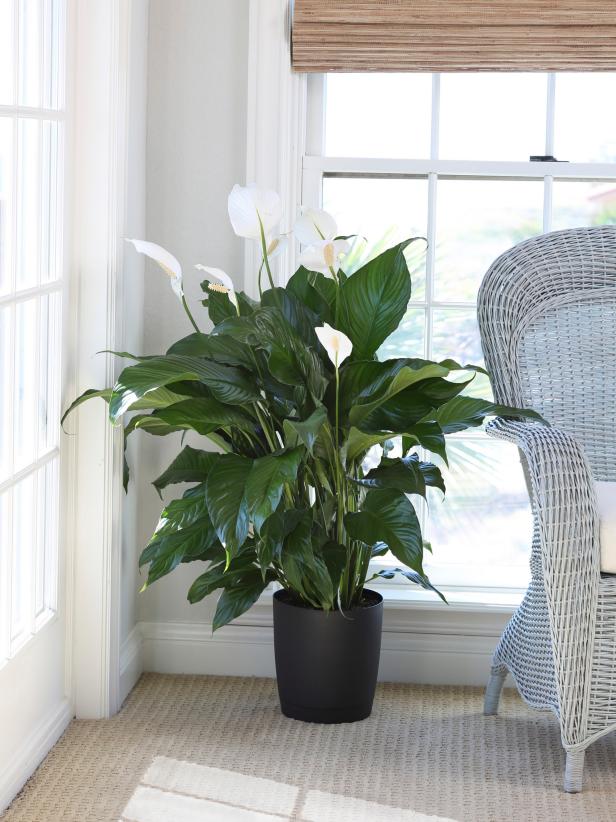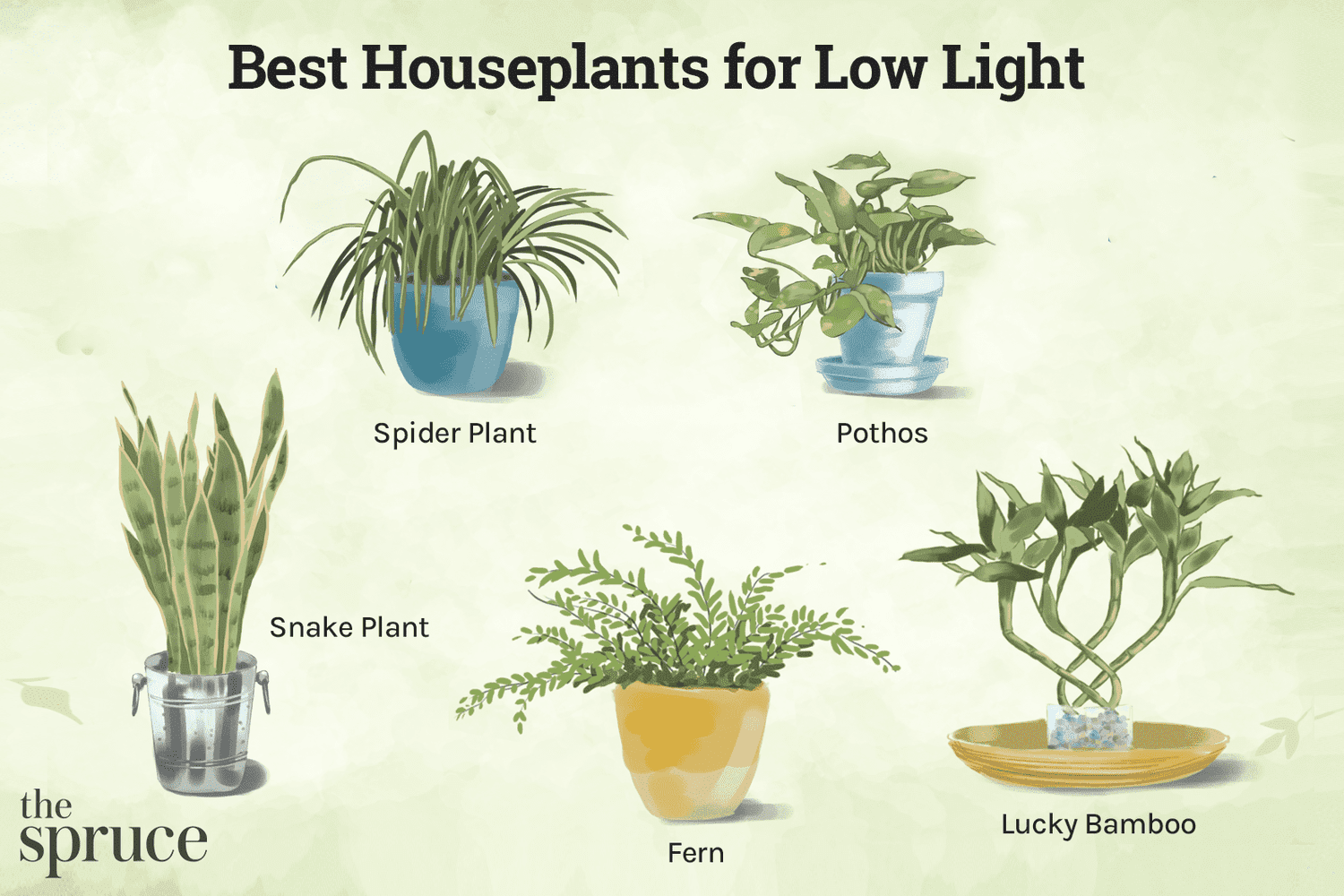The best indoor plants for low light include snake plants and pothos plants. These plants are ideal for spaces with minimal natural light and are easy to care for.
Snake plants, also known as mother-in-law’s tongue, thrive in low light conditions and can help purify the air. Pothos plants, on the other hand, can tolerate a variety of lighting conditions and are known for their trailing vines. These plants not only add beauty to your indoor space but also have the added benefit of improving air quality.
So, if you’re looking for indoor plants that can thrive in low light environments, consider adding snake plants and pothos plants to your collection.
:max_bytes(150000):strip_icc()/low-light-plants-GettyImages-1360510675-50ad3d1ad95942ecaed5e4cee84f7572.jpg)
Credit: www.realsimple.com
Benefits Of Indoor Plants
Boost your indoor space with these best low light indoor plants. Not only do they add a touch of green to your home, but they also improve air quality and create a calming atmosphere.
Improves Air Quality
Indoor plants not only add beauty to your living spaces but also act as natural air purifiers. They have the remarkable ability to filter harmful toxins and chemicals from the air, releasing clean oxygen in return. In fact, studies have shown that having indoor plants can significantly reduce indoor air pollution, creating a healthier environment for you and your family.
Plants like the Spider Plant, Peace Lily, and English Ivy are known for their exceptional air purifying qualities, eliminating pollutants such as formaldehyde, benzene, and trichloroethylene. Placing these plants strategically around your home can greatly improve the quality of the air you breathe, reducing the risk of respiratory problems and allergies.
Reduces Stress And Anxiety
In today’s fast-paced world, stress and anxiety have become common ailments that can take a toll on our mental well-being. However, indoor plants can provide a natural remedy to combat these feelings and create a sense of calm and relaxation.
Research has shown that being around plants can lower blood pressure, reduce heart rate, and decrease stress levels. The color green, which is abundant in plants, is known to have a soothing effect on the mind and body. Having indoor plants in your living spaces can create a peaceful ambiance and help you unwind after a long, tiring day.
Plants such as the Snake Plant, Aloe Vera, and Lavender are particularly effective in reducing stress and anxiety. Their pleasant scents and calming properties make them perfect additions to your indoor garden.
Challenges Of Low Light Conditions
Growing indoor plants in low light conditions can be a challenging endeavor. Limited sunlight exposure and decreased plant growth are two significant hurdles that plant enthusiasts face when trying to cultivate greenery in less than ideal lighting.
Limited Sunlight Exposure
Indoor plants that thrive on sunlight can struggle to survive in low-light environments. These plants, such as sun-loving succulents and flowering varieties, require a certain amount of direct or indirect sunlight to carry out photosynthesis, the process vital for their survival. Lack of sunlight can weaken the plant’s ability to produce energy, leading to stunted growth and poor overall health.
Decreased Plant Growth
Low light conditions hinder the growth and development of indoor plants. Plant growth is directly linked to the availability of light. In low light, chlorophyll production is limited, hindering the plant’s ability to convert light into energy. As a result, plant growth becomes slow and often, the plants may become leggy or spindly as they stretch towards any available light source.
Factors To Consider For Low Light Plants
For those seeking the best indoor plants for low light conditions, consider essential factors such as the plant’s lighting needs, growth requirements, and ability to thrive in low light environments.
Before selecting indoor plants for low light conditions, it is important to understand the factors that affect their growth. Here are the essential factors to consider when choosing the best low light plants:
Light Requirements
Low light plants have adapted to thrive in environments with limited natural light. They can tolerate shade and indirect sunlight. When considering plants for low light conditions, it is crucial to understand their specific light requirements to ensure their growth and overall health.
While some low light plants can survive in extremely dim areas, others may require a slightly brighter setting. This is why it is important to review the light requirements of each plant before making a purchase.
Generally, plants with dark green foliage can adapt well to low light conditions. They have adapted to capture and utilize light more effectively. However, it is important to avoid exposing these plants to direct sunlight as it may scorch their delicate leaves.
Watering Needs
Another crucial factor to consider when selecting low light plants is their watering needs. Different plants have different water requirements, and over or under-watering can harm their growth.
Low light plants typically have lower water consumption compared to their counterparts that thrive in brighter conditions. They have slower growth rates and lower transpiration rates, which means they require less frequent watering.
It is important to let the soil dry out slightly between watering sessions to prevent root rot, which can be detrimental to the plant’s overall health. As a general rule of thumb, check the top inch of the soil for dryness before watering.
To provide adequate moisture without overwatering, use a well-draining soil mix and consider using a pot with drainage holes. This allows excess water to escape and prevents waterlogging, which can lead to root rot.

Credit: www.hgtv.com
Suitable Indoor Plants For Low Light Conditions
Discover the best indoor plants suitable for low light conditions. With features like easy maintenance and air-purifying qualities, these plants, including snake plants, pothos, and peace lilies, are ideal for brightening up dim spaces. Their resilience and adaptability make them perfect for any low-lit environment.
Suitable Indoor Plants for Low Light Conditions If you have limited natural light in your living space, don’t fret! You can still bring the beauty of nature indoors with a variety of plants that thrive in low light conditions. These plants are not only able to survive with minimal sunlight, but they can also help improve the air quality and create a calming ambiance in your home. In this blog post, we will explore three popular indoor plants that are well-suited for low light conditions: the Snake Plant, ZZ Plant, and Peace Lily.Snake Plant
One of the most popular choices for low light environments is the Snake Plant (Sansevieria). This hardy plant is native to tropical West Africa and can tolerate a wide range of light conditions, making it ideal for dimly lit areas in your home. Snake Plants feature long, pointy leaves that can reach impressive heights, adding a touch of elegance to any room. They come in various leaf color variations, including vibrant greens and striking yellow accents.Zz Plant
The ZZ Plant (Zamioculcas zamiifolia) is another fantastic option that thrives in low light. Originating from East Africa, this plant has glossy, dark green leaves that add a stylish touch to indoor spaces. ZZ Plants are known for their ability to hold moisture in their rhizomes, allowing them to withstand dry conditions. This makes them an ideal choice if you tend to forget about watering your plants. Not only do ZZ Plants require minimal sunlight, they also help purify the air by removing toxins.Peace Lily
If you are looking for a low light plant that also adds a touch of elegance, the Peace Lily (Spathiphyllum) is a perfect choice. With its dark green leaves and beautiful white flowers, this plant can brighten up any room with its natural beauty. Peace Lilies are highly adaptable and can survive in rooms with very little natural light, making them a popular choice for offices or apartments with limited windows. These plants also have the added bonus of being excellent air purifiers, helping to create a healthy and serene environment. In conclusion, if you have low light conditions in your home, you don’t have to shy away from having indoor plants. The Snake Plant, ZZ Plant, and Peace Lily are just a few examples of plants that can thrive in dimly lit areas. With their diverse colors and unique features, they can add beauty and tranquility to any indoor space, while also improving air quality. So, go ahead and bring these wonderful low light plants into your home for a touch of nature and a breath of fresh air.Care Tips For Low Light Plants
When caring for low light plants, it’s important to understand the specific needs of these green beauties. Proper care is key to ensure that they thrive in an environment with minimal natural light. Below are essential care tips for low light plants that will help you maintain a healthy and vibrant indoor garden.
Proper Watering Techniques
Watering low light plants can be a delicate balance. Ensure the soil is dry to the touch before watering, as overwatering can lead to root rot. Use a watering can with a spout to control the amount of water and avoid drenching the soil. When watering, ensure that the water reaches the roots without causing waterlogging. Consider using a drainage system or a pot with drainage holes to prevent water accumulation.
Avoidance Of Direct Sunlight
Keep low light plants away from direct sunlight, as they are accustomed to minimal light. Place them in areas with indirect or filtered light, such as near north-facing windows. Avoid exposing them to harsh, direct sunlight to prevent leaf burn or wilting. Consider using sheer curtains or blinds to diffuse the light and protect the plants from potential damage.
:strip_icc()/peace-lily-spathiphyllum-wallisii-domino-bd41865a1-252ea4c0b35b43d19a41435b16a9cd01.jpg)
Credit: www.bhg.com
Conclusion
Choosing the right indoor plants for low light can greatly enhance the ambiance and air quality of your home. With this guide, you can select the perfect plants that thrive in low light conditions, bringing nature indoors without compromising on aesthetics.
Incorporating these plants will undoubtedly elevate your indoor space.








